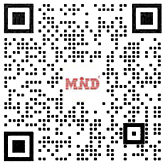At the grand reopening of a flagship store of a renowned clothing brand, customers now experience seamless checkout by simply placing an RFID-tagged down jacket near the self-service payment terminal. The system completes transactions in one second—three times faster than traditional barcode scanning—eliminating peak-hour queues.
Beyond checkout efficiency, RFID drives end-to-end supply chain transformation. While customers browse new collections, the brand’s smart warehouse system leverages RFID for real-time inventory tracking, ensuring optimal stock distribution. Dynamic visibility prevents lost sales from size shortages by enabling instant inter-store transfers.
Pre-RFID Challenges
Prior to adoption, the brand faced industry-wide pain points:
Time-Consuming Processes: Manual stocktakes required 3–4 hours per store, often extending to late-night shifts during peak seasons.
Accuracy Issues: Human errors in barcode scanning resulted in 85% inventory accuracy, causing mismatches between records and physical stock.
High Labor Costs: Large-scale inventories diverted staff from sales, increasing operational overhead.
Digital Transformation Impact
Each garment now carries a unique UHF RFID tag embedded in its label, storing SKU, size, color, and batch data. Employees scan entire racks in seconds using handheld readers—achieving a 50x faster inventory count. Full-digitization tracks every garment’s journey: from materials and manufacturing (including factory and worker details) to storage locations, orders, and sales channels.
RFID also solves the “missing item” dilemma. Previously, locating out-of-stock sizes took 10–20 minutes of manual searches or inter-store calls. Now, staff input queries at POS systems to pinpoint items across warehouses or nearby stores—reducing retrieval time to under 3 minutes and boosting customer satisfaction.
Supply Chain Optimization
At production facilities, RFID tags are attached during manufacturing. Warehouse RFID gates auto-register shipments without human intervention, eliminating receipt errors. Real-time logistics updates enable data-driven allocation—e.g., prioritizing heavy winter coats to northern stores before cold spells.
Strategic Advantages
Short-Term: Reduces labor costs, improves inventory accuracy, and enhances supply chain agility.
Long-Term: Data analytics inform design improvements and marketing strategies.
While pioneers like ZARA (98% inventory accuracy) and Uniqlo (store-wide counts in 1 hour) adopted RFID earlier, this brand achieved industry-leading scalability by embedding RFID into daily workflows across 3,000 stores within 5 months.
A company executive noted: “RFID isn’t just a tool—it’s the engine of retail transformation. Future integrations with AI will analyze fitting-room data to personalize recommendations, making ‘tech-powered retail’ tangible.”
Post time: Sep-16-2025







